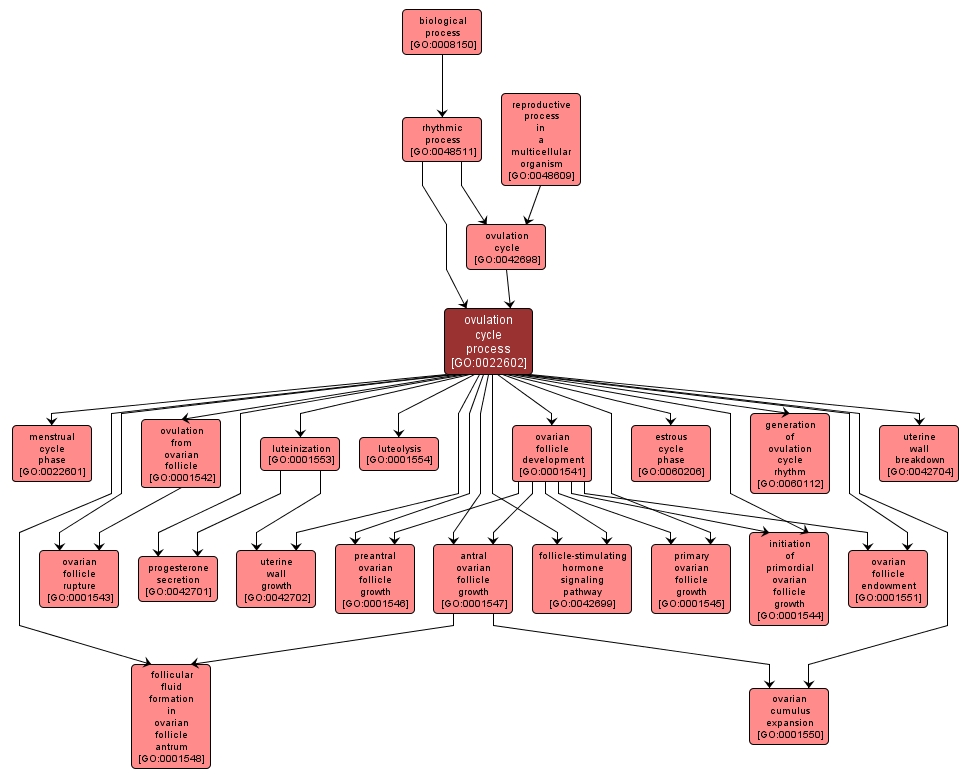GO TERM SUMMARY
|
| Name: |
ovulation cycle process |
| Acc: |
GO:0022602 |
| Aspect: |
Biological Process |
| Desc: |
A process involved in the sexual cycle seen in female mammals, with physiologic changes in the endometrium that recur at regular intervals during the reproductive years. |
Synonyms:
- estrous cycle process
- menstrual cycle process
|
|

|
INTERACTIVE GO GRAPH
|














